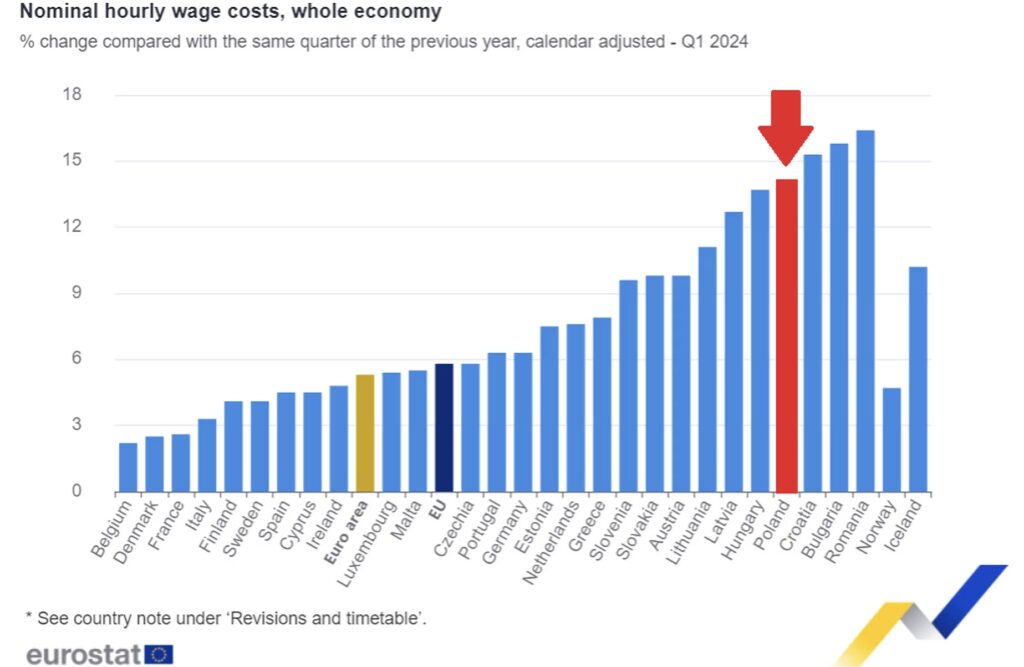Labor costs, primarily comprising wages, are rising across all European Union countries at a rate not seen in the last decade. Romania leads in the statistics, with Poland closely following among the top performers.
The recent announcement by the Polish government of a minimum wage increase in 2025 (from 4,300 to 4,626 PLN gross, approximately €988 to €1063) has sparked the expected dissatisfaction among employers. A spokesperson for small and medium enterprises argues that not only will businesses suffer but also the economy and employees themselves.
The steadily increasing labor costs have become a frequently mentioned concern. According to figures released this week by Eurostat, the European statistical office, labor costs in Poland are rising exceptionally fast compared to most other EU countries.
The rise in compensation costs in Poland is more than twice as fast as the EU average, and six times that of Belgium, which saw the smallest change of 2.2 percent.
In the first quarter of 2024, hourly labor costs increased by an average of 5.1 percent in the eurozone and 5.5 percent in the EU compared to the same quarter of the previous year. “Eurostat enumerates two main components of labor costs: wages and non-wage costs,” the report highlights.
Across the EU, hourly wage costs rose by 5.8 percent over the year, while the non-wage component saw an increase of 4.8 percent. Looking at the last decade, these are among the highest values, though they still fall short of the records set between 2022 and 2023.

Regarding the variance in different countries, it’s noteworthy that Romania recorded the highest increase in hourly wage costs for the whole economy (16.4 percent). It was followed by Bulgaria (15.8 percent), Croatia (15.3 percent) and Poland just behind the top three with a 14.1 percent increase, surpassing Hungary’s 13.7 percent.
Two other EU member states also recorded double-digit growth: Latvia (12.7 percent) and Lithuania (11.1 percent).
Countries like Denmark and France are highlighted for the most stable (smallest) increase in wage costs, both below 3 percent. Germany is close to the average, with an increase in the first quarter of 2024 of 6.3 percent.






